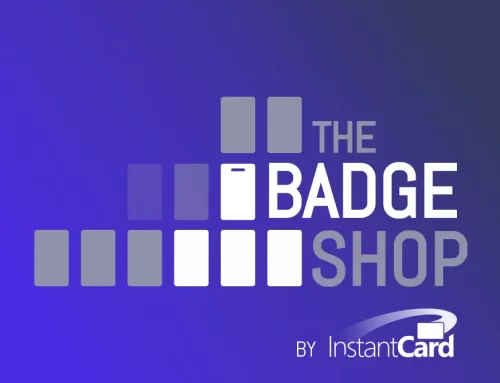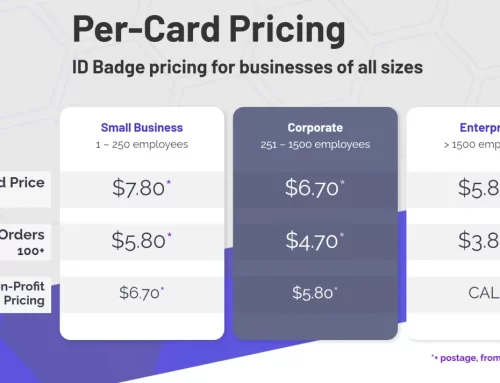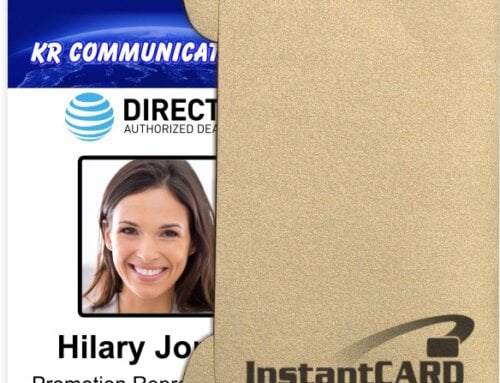In 2005, congress passed the REAL ID Act—establishing security standards for IDs to be federally recognized.
(Officially, this is referred to as “H.R.1268: Emergency Supplemental Appropriations Act for Defense, the Global War on Terror, and Tsunami Relief, 2005 (Enrolled as Agreed to or Passed by Both House and Senate, TITLE II—IMPROVED SECURITY FOR DRIVERS’ LICENSES AND PERSONAL IDENTIFICATION CARDS” … but we’ll stick with “REAL ID Act.”)
Of course, this doesn’t directly pertain to us. Each state is required to produce their own IDs and conform to these standards. And, this act is specifically for the issuance of state (or federally recognized) IDs.
We do, however, take great pride in the security standards we implement. So, when I first read through the REAL ID Act (thanks to some clickbate entitled something like “The government will no longer recognize your PA State License. Run for the hills!”) I immediately considered if our cards are able to conform to this legislation.
(Don’t run for the hills. Pennsylvania successfully filed for an extension to comply to the act and has now taken measures to satisfy Capitol Hill.)
Lately, we’ve been making a conscientious effort to work with more Police and fire departments in helping them practice more secure. It seems funny to me that most departments’ ID badges are considerably less secure than state ID cards. So, why not go through the main points in the REAL ID Act. We can see if we can facilitate each standard, and even what you can do to exceed these federal standards!
The person’s full legal name
Ok, this is clearly not a hard one; and is, in fact, standard on most IDs. Although with our web app, you can also choose how names are displayed on each ID. For example, you may make the first name larger to make your employees seem approachable (somehow, we don’t feel this is a priority for state IDs)
The person’s date of birth
Again, a simple accommodation. With InstantCard, however, you can also us QR codes to provide real-time verification of documents such as one’s birth certificate, etc. (OK, we’ve never had anyone request real-time birth certificate verification, specifically, but we do facilitate similar verification through our Credential Verification Service.)
The person’s gender
Not hard at all. We often recommend this, along with other physical information, for the back of government-issued IDs.
The person’s driver’s license or identification card number
You may either enter these manually for each employee, or our system can generate ID badge numbers for you and automatically insert them into each card. ID numbers may also be tied to unique bar codes, mag stripes, QR codes, or smart chips. A number is easier to falsify than a chip. (Numbers might help make a smart student, but chips make a smart card.)
A digital photograph of the person
Upload photos of each of your employees and they will be automatically inserted into each template. But, to be even more secure, you may also include a ghosted image of their photo—overlap this image with other card data to increase security.
The person’s address of principle residence
This probably isn’t advisable for your company’s ID cards, honestly. But, we do recommend you include your business address on the back of each card in case it is lost (we’ll do this at no extra cost).
The person’s signature
You can absolutely upload each worker’s signature to be included on your ID badges. For government workers, however, we advise that you include the supervisor’s signature on each badge to maximize security.
Physical security features designed to prevent tampering, counterfeiting, or duplication of the document for fraudulent purposes.
We offer various holographic security overlays which make cards extremely resistant to counterfeiting. Even more secure, however, is smart card technology—the best way to make your IDs tamper and fraud-proof.
A common machine-readable technology, with defined minimum
We offer virtually every option for integrating technology into your secure badge program. Choose what you need—mag stripes, bar codes, smart chips, QR codes, RFID—and nothing which you don’t need. We also will design (for free) unlimited ID card templates for you, so you can get exactly the tech you need on only the cards where it is needed!
BONUS
The REAL ID Act also lists a an additional requirement “Employ technology to capture digital images of identity source documents so that the images can be retained in electronic storage in a transferable format.” Well, that just sounds a lot like our Credential Verification Service.
We know that if you’re reading this, you are most likely not a head of state, and these requirements don’t apply to your ID badge program. But, isn’t it nice to know that we’ve got you covered, even when measured by the strictest standards?





